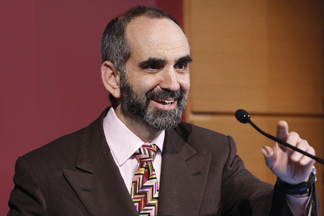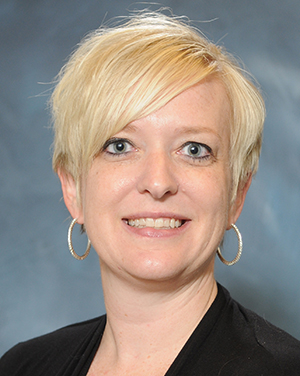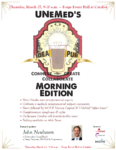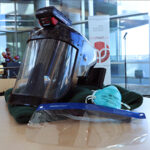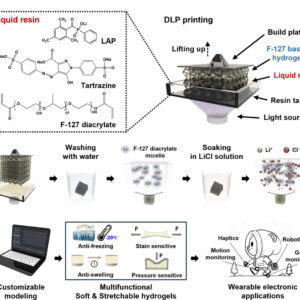by Leslie Reed, Omaha World-Herald
OMAHA, Neb. (March 12, 2011)—University of Nebraska Medical Center leaders appear to have found the magic formula to expand federally funded research.
They built state-of-the-art research towers in midtown Omaha and stocked them with sophisticated laboratory equipment. The facilities helped attract more top-notch scientists. Those scientists, in turn, helped win more federal grant dollars. Research funding at the medical center has increased an average of nearly 27 percent each of the past three years, Vice Chancellor Tom Rosenquist told the NU Board of Regents Friday.
“It’s no secret — we just have a strategic plan to utilize our best research space to recruit and retain the best scientists,” he said in an interview. “We make this a desirable place for people to come and to stay and to do their research.”
He credited researchers like Ken Bayles, wooed from the University of Idaho five years ago, who does groundbreaking work on antibiotic-resistant bacteria. Howard Fox came three years ago from the Scripps Research Institute in La Jolla, Calif., to study the chronic effects of HIV on the nervous system. Not all of the big grant generators are new recruits, however. Irv Zucker has been on the UNMC faculty since 1971, studying congestive heart failure.
“I think facilities are critical to attracting top faculty,” said UNMC Chancellor Harold Maurer. “We’ve got great core laboratories and great infrastructure to allow research. If you have all that, you have the ability to attract the best and the brightest.”
UNMC researchers have been able to capture a growing share of National Institutes of Health funding even though NIH funds are increasingly limited, Rosenquist said. UNMC has outperformed its peer group institutions. Over the past five years, NIH research funding at the medical center has grown 35.5 percent. The University of Kansas Medical Center, also with more than 30 percent growth, is the peer that comes the closest. But the remaining eight peer institutions had less than 10 percent growth. Four received fewer NIH dollars in 2009 than they did in 2005.
With $91.6 million in federal research grants for the 2009-10 fiscal year, UNMC is closing the gap with its sister campus, the University of Nebraska-Lincoln, which reported $94.3 million in federal research funding for the same time frame.
It’s not that UNL is slacking off. It has increased its research effort by an average of nearly 11 percent a year for over the past three years.
“We should be proud of these two campuses, they’re outcompeting their academic peers,” said Richard Hoffman, associate vice president for academic affairs and research, in the NU Provost’s Office.
In 2007-08, UNL received $72.3 million in federal research grants, while UNMC collected $43 million.The N U system now collects more than $300 million a year in outside support for its research, NU President J.B. Milliken said. The bulk of that funding comes in the form of federal grants awarded to UNL and UNMC faculty researchers. Both campuses have exceeded goals set by the regents for growth in federal research dollars. It may be challenging to maintain that momentum, however.
Matt Hammons, NU’s director of federal relations, warned that federal budget cuts likely will make the competition for federal research dollars more intense in coming years. “We are really entering a new era,” he said. In addition, neither UNMC nor UNL have given faculty a general pay increase during the past three years, because of state budget cuts.
As of 2009-10, UNL average faculty salaries were 4.6 percent lower than the average paid at 10 comparable institutions, such as Iowa State, Iowa, Purdue and Ohio State. UNMC faculty salaries, not including clinical staff, were 7.4 percent lower than nine comparable institutions, such as Iowa, Oklahoma, Kansas and the University of Illinois-Chicago.
Milliken told the regents that NU will make an effort to boost faculty salaries next year, even though it does not expect to receive increased funding from state government. He said that may require budget cuts elsewhere in the system.
Maurer told board members that improving salaries is the Med Center’s “No. 1” budget priority.
“People are coming to me to talk about it,” he said. “People are going to leave unless it’s addressed.”


